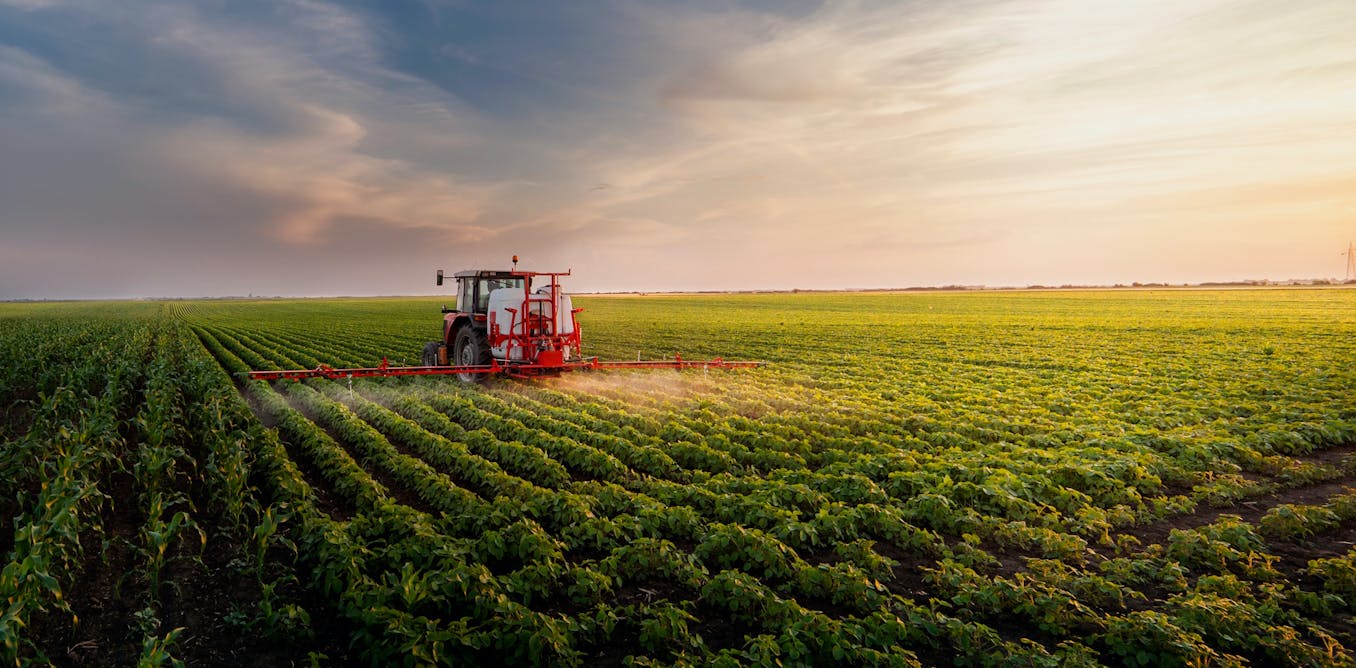The world’s growing population demands ever-increasing crop production. However, the fertilisers required to meet this demand have a range of environmental impacts, from their use of finite raw materials and mining, to unsustainable manufacturing processes and inefficient products that pollute the environment.
For decades, agricultural philosophy has relied on putting an excess of nutrients into the soil. Since many of these nutrients are lost along the way, extra has to be added to meet the demands of the crop. In addition to inflating farmers’ costs, this leaves a considerable environmental footprint in the air and water, as well as, of course, the soil, which is becoming less and less fertile as a result of these practices.
Read more:
Healthy soils are good for your gut, brain and wellbeing – here’s why
Making farming sustainable
Faced with this panorama, we at the Agricultural Biology and Chemistry Group of the BIOMA Center of the University of Navarra carry out research to optimise natural resources, and to develop more efficient and sustainable alternatives with the lowest possible environmental impact.
Any problem can be approached in two ways. One way starts from oneself, and the other starts by observing reality. The history of science has shown that the former approach – based on theories and hypotheses that impose their own model on reality – leads to fundamentally flawed frameworks. For this reason, our research aims to implement the latter.
First of all, we closely study how a plant absorbs and uses nutrients, as well as how it interacts with soil biochemistry. By meticulously researching the soil-plant system at all levels – ionomic, metabolomic, microbiological and genomic – we take a non-invasive approach to reality in order to learn from it.
Armed with this clear knowledge of what works best for a particular plant in a particular set of surroundings, we then design solutions, several of which we will explain here.
From initial studies to final products
The study of plants shows that they release organic acids through their roots when they need nutrients. It also reveals that when they have to activate these mechanisms of “food” intake, they make much better, more efficient use of the nutrients they have absorbed.
Studies of soil have revealed the existence of a special organic substance called humic acid, which has interesting biostimulant properties for plants. Research has also discovered soil micro-organisms that can work symbiotically with plants to improve their growth.
In our research, we have designed formulations that use these characteristics. Here are some examples:
In order to minimise the impact of manufacturing and using fertilisers, we have also developed:
-
A decontaminant that directly, irreversibly removes organic and inorganic products from the soil. To do this, we use byproducts from the production of magnesium oxide, a chemical used in animal feed and agriculture.
-
A way of manufacturing dry fertilisers that give higher yields through mechannical activation. In this system, solid reagents are mixed in a ball mill, the friction of which generates the heat necessary for the reaction to take place.
-
A design for artificial soils that uses byproducts to backfill and restore areas affected by mining activity. Compost, mining byproducts and sand are mixed to simulate the texture and organic content of soil.
Read more:
Pesticides: farming chemicals make insects sick at non-deadly doses – especially in hot weather
A sustainable agricultural philosophy
Our research philosophy is characterised by its respectful approach to what we study, as we always begin by considering the natural resources available in an environment. By combining this observation with deep interdisciplinary study, we are able to consider the impacts of the whole process and, from there, find viable and sustainable practical applications for what we discover.
The future of fertilisers depends on using less, more efficient and more sustainable designs and applications. This can only be achieved through in-depth, quality research.



